Enter a universe where history comes to life and time is suspended. We explore the history and reveal the mysteries of the world’s ten oldest monuments on this enthralling voyage.
The world’s oldest monuments are more than just brick and stone constructions; they serve as portals to the past, chroniclers of antiquity, and preservers of cultural legacy.
Let’s conserve and protect these timeless gems so that future generations might be inspired by them. These timeless architectural wonders never cease to amaze and motivate. Let’s go on a virtual tour of these historical marvels, from the enigmatic pyramids of Egypt to the beautiful craftsmanship of India’s jewels.
Ellora Caves, India
The 34 monasteries and temples that make up the Ellora Caves were unearthed between the sixth and tenth centuries AD. The Buddhist caverns, Hindu Caves, and Jain Caves are the three primary divisions of the caverns. Each group has distinctive architectural details and artistic styles and reflects a different religious tradition.
The Ellora Caves’ Buddhist Caves, which range in age from 1 to 12, are the oldest. Viharas (monastic halls) and chaityas (prayer halls) are the main architectural features, and they are decorated with elaborately carved sculptures and reliefs showing various incidents from Buddha’s life. These caves represent the earliest stage of Buddhist rock-cut construction in India and offer important insights into the social and spiritual customs of the time.
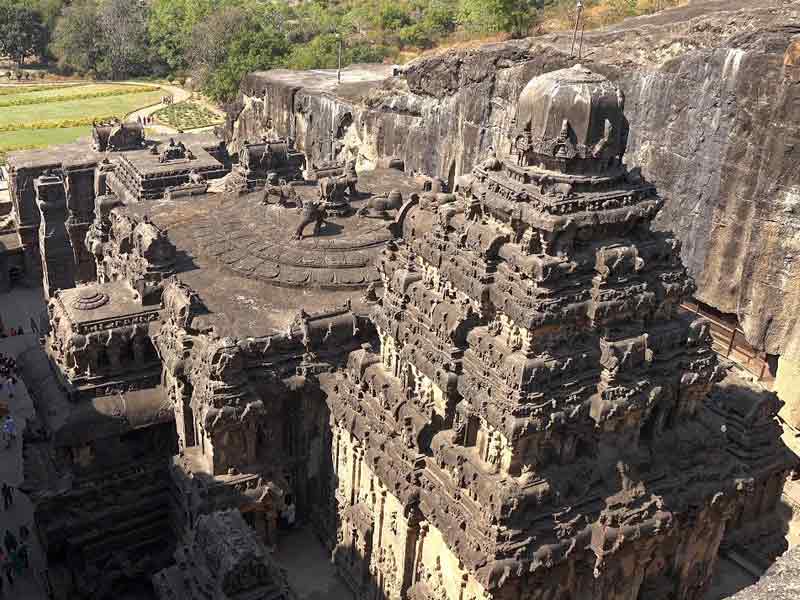
The largest and most complex collection in Ellora is the Hindu Caves, which range in number from 13 to 29. They exhibit extraordinary artistic talent and craftsmanship. The Kailash Temple, also known as Cave 16, is the most well-known cave in this cluster.
It is the largest monolithic edifice in the world and a work of exquisite architecture dedicated to Lord Shiva. The Kailash Temple, with its elaborate carvings, sculptures, and imposing central shrine, is a masterwork of rock-cut architecture. Visitors are in awe of the human capacity for artistic expression because of the grandeur and size of this temple.
The Jain Caves, which range in number from 30 to 34, mark the end of Ellora’s cave excavation. These caverns are renowned for their elegance and simplicity. The majority of the images and sculptures in the Jain caves are of Tirthankaras (spiritual masters) and other Jain deities. The most famous of these caves is Cave 32, also called Indra Sabha, which houses a stunningly sculpted temple honoring Lord Indra.
The Pyramids of Teotihuacan, Mexico
The distinctive pyramids of Teotihuacan, which dominate the surrounding area and bear witness to the highly developed engineering and architectural abilities of the civilization that constructed them, are the center of the city. The Pyramid of the Sun, or “Pirámide del Sol” in Spanish, is the most well-known and substantial pyramid. It is one of the tallest pyramids in the world, rising more than 200 feet. It exudes majesty and force due to its substantial stone construction and commanding presence.
The Pyramid of the Moon, also known as “Piramide de la Luna,” is another remarkable pyramid. It is a little smaller than the Pyramid of the Sun but still, a striking site to behold, and it is situated at the northern end of the Avenue of the Dead. It functioned as a center for rituals and ceremonies, and its vantage point over the surrounding old city is stunning.
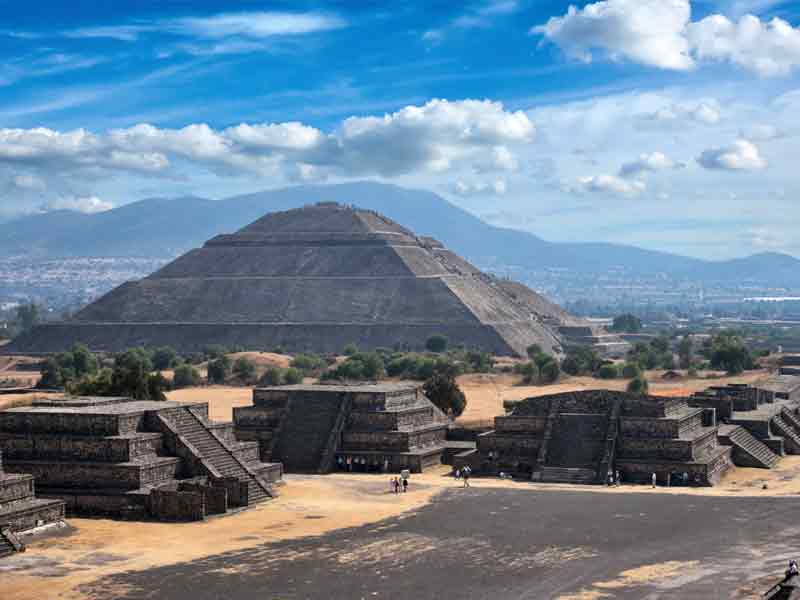
Teotihuacan’s pyramids were not just works of art in terms of architecture; they also had a tremendous impact on culture and religion. They were a component of a larger complex that also contained dwellings, temples, palaces, and other buildings. The city was precisely constructed, with broad boulevards, elaborate murals, and a convoluted social structure.
Teotihuacan is thought to have been home to a diverse population from many Mesoamerican cultures, even though its history is still somewhat obscure. Teotihuacan was one of the biggest towns in the world during its height between the first and seventh centuries CE when it had a population of over 100,000. Due to the trade routes that linked it to other significant cities in the area, its influence spanned well beyond its limits.
The Great Pyramid of Giza, Egypt
The Great Pyramid of Giza built some 4,500 years ago, is a magnificent example of human intellect and ambition. When it was initially constructed, Pharaoh Khufu, who governed Egypt in the 26th century BC, was buried there. Massive limestone pieces, some weighing several tonnes, were carefully mined and transported to the site to be used in the construction of the pyramid.
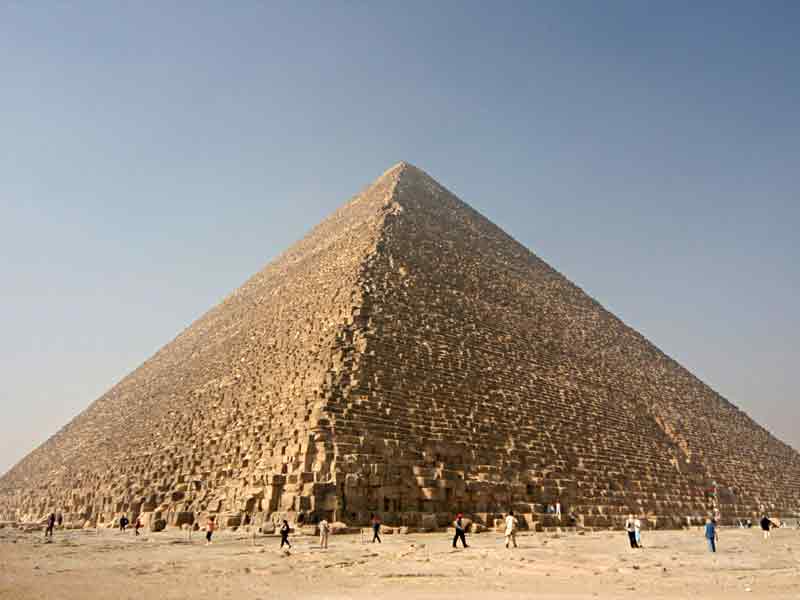
The Great Pyramid is a well-known representation of ancient Egypt that has captivated people’s attention for many years. Its sheer enormity is mind-boggling; at its initial height of roughly 146 meters (481 feet), it held the record for the world’s tallest man-made structure for more than 3,800 years, up to the construction of Lincoln Cathedral in England in the 14th century. approximately 2.3 million stone blocks are thought to have gone into the construction of the approximately 13-acre pyramid.
Stonehenge, United Kingdom
The prehistoric structure known as Stonehenge is in Wiltshire, England, in the United Kingdom. About 8 miles (13 km) north of Salisbury is where it is located. One of the most recognizable and enigmatic archaeological structures in the world, Stonehenge is included as a UNESCO World Heritage Site.
The actual monument is made up of a ring-shaped arrangement of massive standing stones, or megaliths, that are surrounded by earthworks. The largest standing stones can measure up to 30 feet (9 meters) in height and weigh over 25 tonnes.
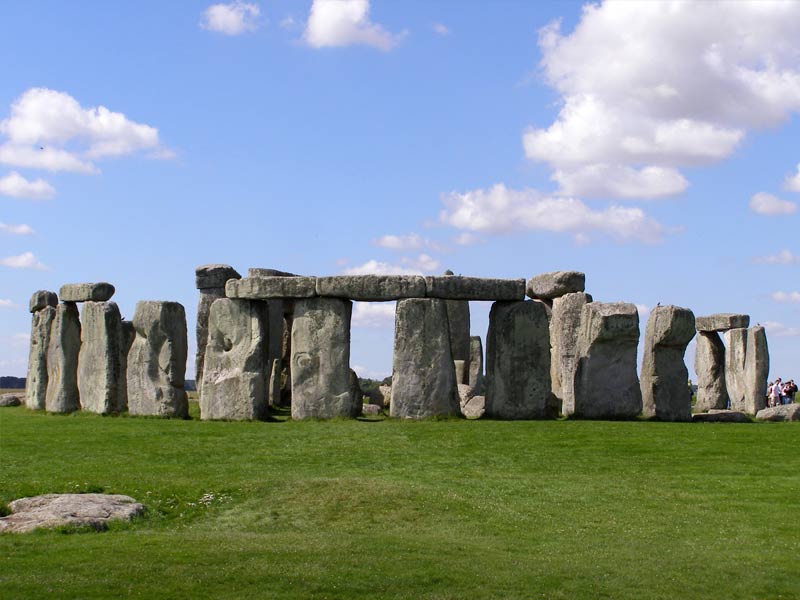
The size of the stones varies. Around 30 upright stones, or sarsens, with lintels atop them, originally made up the outer ring. Five trilithons—two vertical stones with a horizontal stone over the top—are arranged in a horseshoe pattern inside the outer ring.
The first phase of Stonehenge’s construction is thought to have started approximately 3100 BCE, and the last significant part was probably finished around 1600 BCE. Stonehenge’s intended use and exact construction processes are still a matter of conjecture and ongoing study. The monument’s alignment with the solstices and other celestial occurrences raises the possibility that it held some significance for the astronomical calendar.
The Megalithic Temples of Malta
An incredible archaeological marvel that provides a window into the prehistoric culture that once flourished on the islands is the Megalithic Temples of Malta. These temples predate well-known constructions like Stonehenge and the Egyptian pyramids and are among the world’s earliest freestanding stone buildings.
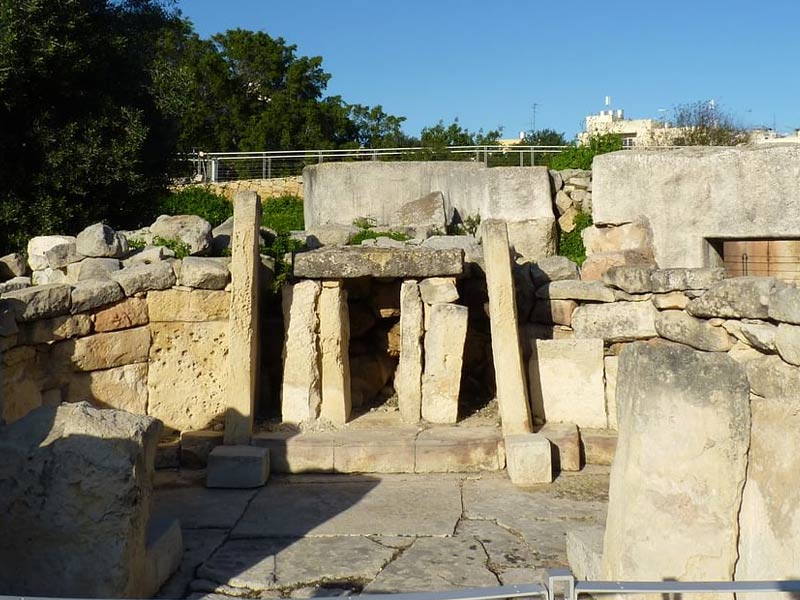
The Megalithic Temples are found on the islands of Malta and Gozo and were constructed between 3600 BC and 2500 BC. They are a striking example of the architecture and engineering prowess of the ancient people who built them. Massive limestone blocks, some weighing several tonnes, that were mined and carried to the temple sites were used to build the temples.
In Malta, there are various megalithic temples, each with distinctive qualities and architectural designs. The most well-known ones are the Tarxien, Gantija, Aar Qim, and Mnajdra Temples. The ancient inhabitants used these temples not just as places of worship but also as significant ceremonial and social meeting places.
The Mausoleum of Theodoric, Italy
The Mausoleum of Theodoric, which was constructed in the first half of the sixth century, is a superb illustration of Ostrogothic design. The beautiful facade of this octagonal building is covered in geometric designs and elaborate brickwork. Roman, Byzantine, and Gothic elements are combined in the mausoleum’s design, demonstrating the era’s vast cultural diversity and high level of artistic mastery.
Because the mausoleum is made entirely of Istrian stone, it has a distinctive appearance and is built to last. With outside walls that are about 10 meters tall, it stands as a huge monument. The building’s circular dome contributes to its majestic appearance.
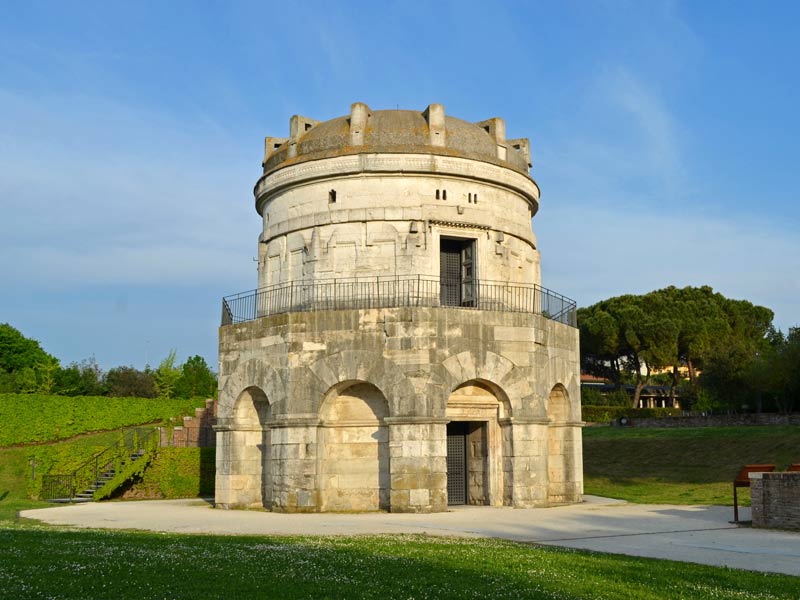
The grandiosity and veneration with which Theodoric was regarded are reflected in the creation of this imposing mausoleum, which was supposed to be his ultimate resting place.
Visitors are welcomed by the dimly lighted interior of the Mausoleum of Theodoric. The main chamber is octagonal in shape and has a circular base that is thought to have supported Theodoric’s sarcophagus. Beautiful niches and marble slabs, some of which still include pieces of old murals and ornamentation, adorn the walls. The mausoleum’s overall mood is melancholy and enigmatic, taking visitors back in time to a period when various cultures and customs came together.
The Great Wall of China
Millions of laborers, including soldiers, peasants, and prisoners, contributed their labor to the building of the Great Wall. Many of the estimated hundreds of thousands of fatalities that occurred during construction were interred within the wall itself. Various materials, including stone, brick, and wood, were used to construct the wall, based on the resources that were available in various areas.
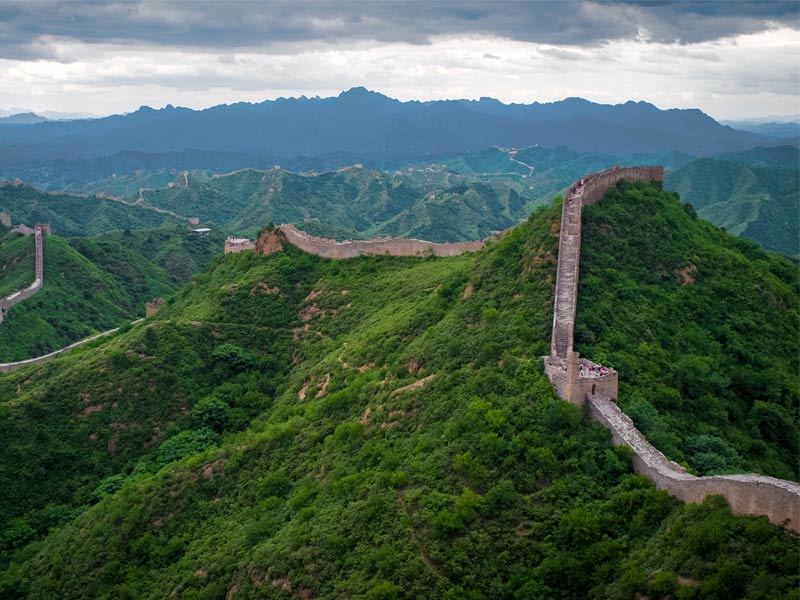
It is a huge construction that is roughly 13,000 miles (21,196 km) long, making it the world’s longest wall. Beginning in the third century BC and extending through the seventeenth century AD, the wall was constructed over several centuries. Its primary goals were to safeguard China from raids by nomadic tribes and to control trade along the Silk Road.
Also, Read 10 Most Powerful Empires In Human History
Chichen Itza, Mexico
In Mexico’s Yucatan Peninsula, there lies a fascinating archaeological site called Chichen Itza. With thousands of visitors each year, it is one of the most recognizable and well-preserved Mayan ruins in the entire world. The location originally housed a significant Mayan city that thrived between the ninth and thirteenth century AD.
The imposing El Castillo, also known as the Temple of Kukulcan, is one of Chichen Itza’s most well-known buildings. At the center of the complex, this beautiful pyramid is a monument to the Mayans’ sophisticated architecture and astronomical expertise. The spectacular stairway at El Castillo coincides with the equinoxes and casts a shadow that appears to be a serpent sliding down the pyramid.
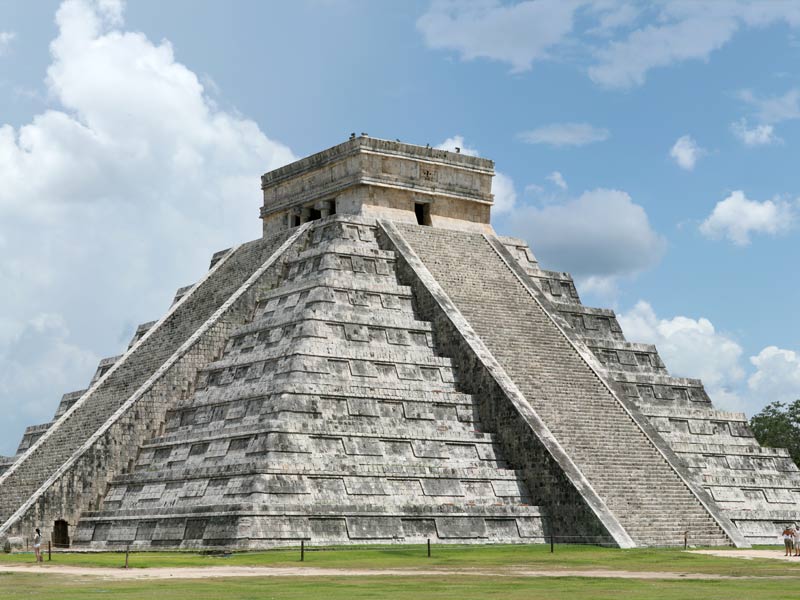
The Great Ball Court, the biggest and best-preserved ball court in Mesoamerica, is another noteworthy aspect of Chichen Itza. This enormous playing field is approximately 225 feet (68 meters) broad and 545 feet (166 meters) long. The Mesoamerican ballgame, a ritual sport with profound cultural and religious importance, was played on this court by the Mayans.
The Temple of the Warriors, a large edifice ornamented with several columns and figures, is also located in Chichen Itza. The temple features beautiful sculptures that portray Mayan mythological figures like warriors, gods, and serpents with feathers. The location is evidence of the Mayan civilization’s extensive creative and architectural legacy.
The Callanish Stones, Scotland
The majestic and enigmatic Callanish Stones, also known as the Callanish Standing Stones or Tursachan Chalanais in Scottish Gaelic, is an ancient structure situated on the Isle of Lewis in the Outer Hebrides of Scotland. The standing stones in this megalithic complex are arranged in a circle, with a central stone circle and four pathways radiating outwards. The stones are about 5,000 years old and originate from the late Neolithic, circa 3000 BCE.

Archaeologists and historians continue to speculate about and disagree over the meaning and purpose of the Callanish Stones. It is thought that those who constructed them utilized them for religious and ceremonial functions. Some ideas contend that the stones functioned as a kind of calendar or observatory by being aligned with astronomical occasions like the summer solstice. Others contend that they were involved in ceremonies and rituals that celebrated the cycles of life, death, and rebirth.
The Acropolis of Athens, Greece
We travel to Greece and gaze in wonder at the magnificent Acropolis. It is the pinnacle of classical Greek design and culture. The Parthenon is one of the most well-known buildings on the Acropolis.
The Parthenon is a magnificent temple constructed in the fifth century BCE and dedicated to the goddess Athena, the protector deity of Athens. It is recognized for its pleasing proportions and rich architectural features and is regarded as a superb example of classical Greek architecture. The Parthenon was built from white marble, and it was covered in intricate sculptures, many of which portrayed scenes from myths.
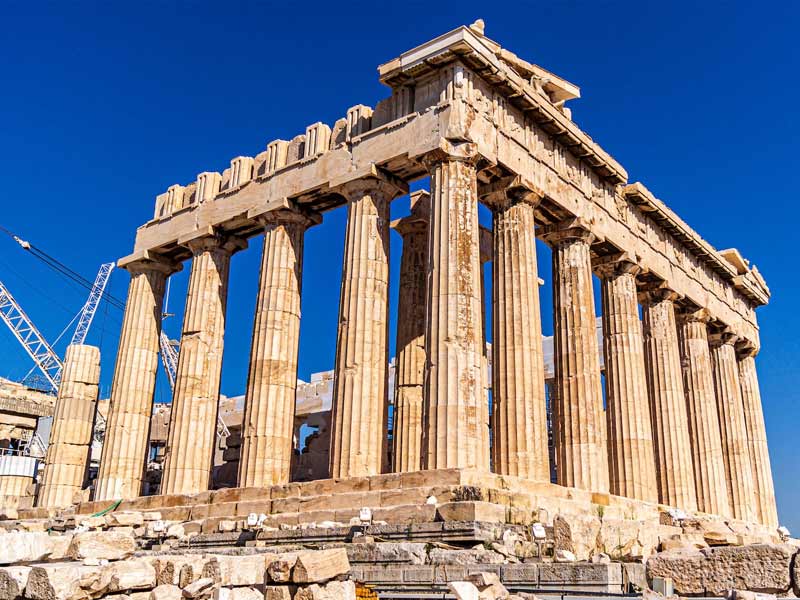
The Erechtheion and the Propylaea are two more well-known structures that may be found on the Acropolis in addition to the Parthenon. The renowned Caryatids carved female figures serving as columns, can be seen in the Erechtheion, a temple that is dedicated to both Athena and Poseidon. On the other side, the Propylaea displayed the splendor of Attic architecture and functioned as the Acropolis’ imposing gateway.




























